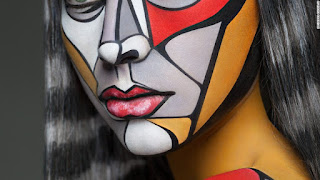INT TO ARCHITECTURE (week 3)
Week 3
Form & Style in the Visual arts by Thomas Munro

A) Visual,static, surface design
Presented mostly in two dimensions of space, on a flat ,polyhedral, curving surface. The main components are lines colors and texture.
Subdivisions:
•strip(linear) design
1. long and narrow , extended mostly on one dimension, lengthwise
2. purely abstract, nonrepresentational,
•all over design
1. unbounded in two dimensions with a tendency to indefinite repetition or prolongation in two dimensions and four directions.
2. May completely cover a solid object
3. The framework is not flat(but treated is if it was)
4. Arranges the units on two coordinates, intersecting systems of lines
5. Flat or three-dimensional in both preventatively and suggestively
6. Usually decorative
7. It tends to repeat units
•bounded area design
1. Limited within a given two dimensional area
2.Preventatively flat or three-dimensional
B)visual,static,solid design :
1.three-dimensionally presented, it has considerable extent in thickness or depth as well as in length and breadth .The thematic units consist of different solid parts
2.interior design : Surrounding or partly surrounding the observer. The temporal order of perception is only partially determined.
3.exterior design : viewed from outside, presents many different designs as seen from different points of view. Some design types permit indeterminate or slightly determined kinds of motion .
4.combination of Interior & exterior : Movements occur in it , but are mostly indeterminate.
5.sculptural design : varies as to the amount of three-dimensional development.
C) visual,mobile,temporally developed design
1.Mobile surface design: compromises visually presented thematic development in time , as well as change and motion in determinate sequence , mostly in two dimensions of space. Includes : motion pictures ,shadow plays and lumia or mobile color, all presented as flat images on a flat or curving surface.
2.Mobile solid design : presents solid figures in more or less determinate motion. It is developed in three dimensions of space and time .
D)Auditory design
Presented in more or less determinate temporal sequence. Usually lacks much spatial development.
1.Musical design : based on thematic development of rhythm , pitch , timbre, consonance and dissonance, etc., and of developed components such as melody, tempo, meter, dynamics, chord structure and progression , and orchestration. Any sound or noise can be treated as a theme, repeated, varied , contrasted with others , and organized into a series.
2.Word-sound design : presented aurally when literature is spoken , and thus resembles music to some extent.
3.Verbal – musical design : combination of musical and word-sound themes and patterns.
E) Audiovisual design
Involves some temporal change because of the evanescence of sounds.
1.Audiovisual surface design : mobile visual patterns combined with music, word-sounds or both.
2.Audiovisual solid design : combination of mobile solid patterns with auditory ones .
Types or design based on suggestive thematic development.
This list distinguishes types of design mainly in a basis of presentative development , according to the sense primarily addressed and the way in which the presented factor is developed in
space , time or both .
Representational and other suggestive factors are mentioned and it should be emphasized that such factors are capable of elaborating thematic development.
They may include kinesthetic tensions and relaxations . Suggestions function thematically in literature , music and visual arts .
References to ideas and emotions and every image derived from senses can be arranged into patterns
Comments
Post a Comment